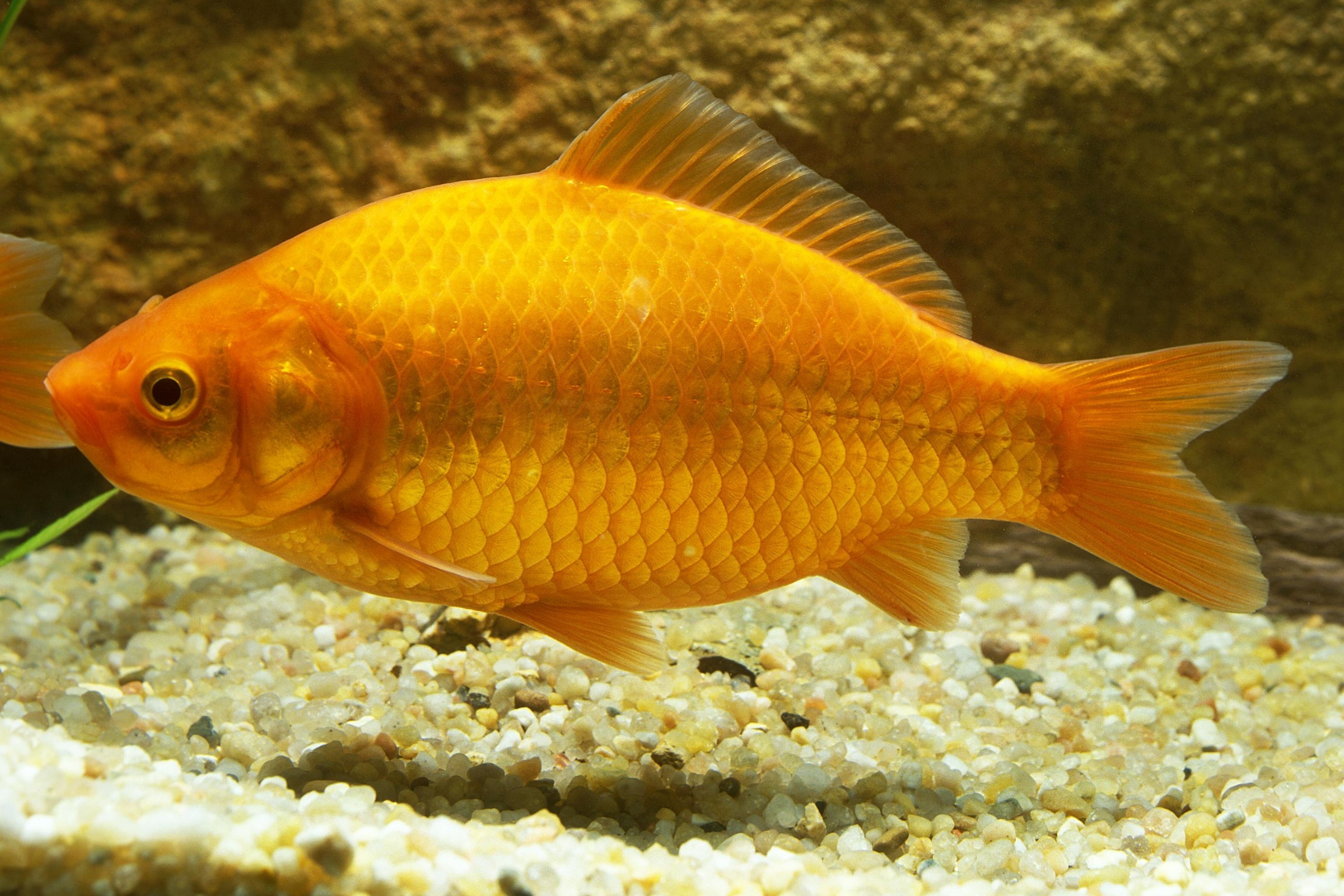Crucian carp
(Carassius auratus)

Description
The crucian carp (Carassius carassius) is a medium-sized member of the common carp family Cyprinidae. It occurs widely in northern European regions. Its name derives from the Low German karusse or karutze, possibly from Medieval Latin coracinus (a kind of river fish). The crucian carp is a widely distributed European species, its range spanning from England to Russia; it is found as far north as the Arctic Circle in the Scandinavian countries, and as far south as central France and the region of the Black Sea. Its habitat includes lakes, ponds, and slow-moving rivers. It has been established that the fish is native to England and not introduced. The crucian carp is a medium-sized cyprinid, typically 15 centimetres (5.9 in) in body length, and rarely exceeds in weight over 2 kilograms (4.4 lb), but a maximum total length of 64 centimetres (25 in) has been reported for a male, and the heaviest published weighed 3 kilograms (6.6 lb). They are broadly described as having a body of "golden-green shining color", but a more precise source states that young fish are golden-bronze but darken with maturity, until they gain a dark green back, deep bronze upper flanks, and gold on the lower flanks and belly, and reddish or orange fins, although other colour variations exist. One distinguishing characteristic is a convexly rounded fin, as opposed to goldfish (or C. gibelio) hybrids which have concave fins. The crucian carp is also the type species for the genus, which has led to confusion in the taxonomy of species native to East Asia. There are reports of hybridisation between the crucian and domestic or feral goldfish, which has been verified by production of viable hybrids in laboratory conditions. Although the hybrids thus produced were sterile or nearly so, genetic contamination of the native population has been raised as a concern; even if the hybrids cannot continue to propagate, the F1 hybrids exhibit hybrid vigour or heterosis, being much more adept at finding food and evading predators than either of their parents, which has been proposed to constitute a possible threat to the native crucian carp population. The variation in shape of a crucian carp can be very high. When cohabiting waters where predatory fish are present, there occurs an induced change in the morphology of the population from a sleek-bodied form to a deep-bodied form, which makes it difficult for predator fish to fit the crucian carp within its jaws.
Taxonomic tree:







